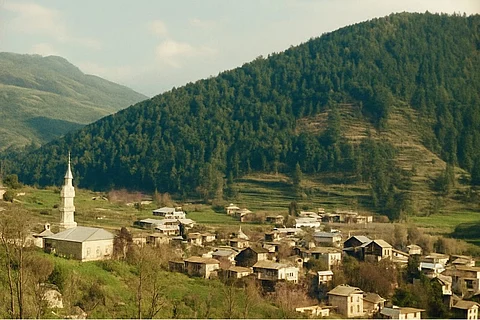

Doda, once a peaceful and serene hilly township nestled on the right bank of the mighty Chenab River, is now grappling with one of its most critical urban challenges — traffic congestion.
With the rapid rise in population and an exponential increase in the number of private vehicles, traffic jams have become a daily nightmare for residents of Doda town. What was once a quiet administrative centre has turned into one of the most densely populated urban areas in Chenab Valley.
The main motorable roads — from Dak Bungalow to Nehru Chowk, Akram Abad to Bharat Road, Dak Bungalow to Nagri, and Bharat Road to Sah — were all constructed decades ago.
About three decades ago, there were only seven private cars in the entire town, one of which was owned by the author. A few motorbikes and half a dozen government vehicles completed the traffic count of the era.
The town's original population was less than 15,000. However, over the last two decades, a wave of migration from rural areas has changed the face of Doda forever. The current population is now estimated to be over 1.25 lakh. This explosive growth, without corresponding infrastructure development, has led to urban saturation and a complete collapse of town planning.
Doda town today spans less than two square kilometers and has under five kilometers of motorable roads. These narrow roads, never widened since their construction decades ago, were not designed to handle today’s traffic load. With no footpaths, no designated bus stands, and no terminals for passenger vehicles, the infrastructure is completely overwhelmed.
Auto rickshaws were introduced in the town only about 20 years ago. Today, more than 300 auto rickshaws operate daily within the limited road network. They compete for space with over 1,500 other vehicles moving through the town each day, including private cars, motorcycles, goods carriers, and vehicles from surrounding rural areas.
The roads, already narrow and congested, become impassable during peak hours.
With the rising standard of living and increasing population, more than 80 percent of households in the town now own at least one vehicle, while over 20 percent have more than one.
Personalised vehicle ownership
Rough estimates suggest that there are now between 8,000 and 10,000 registered vehicles in Doda town alone. In an attempt to manage this crisis, the administration has started constructing two multi-storeyed parking complexes.
However, experts argue that these facilities will only accommodate a few hundred vehicles, barely scratching the surface of the problem. Without significant expansion of parking facilities and traffic regulation, congestion is bound to persist.
On any given day, traffic jams are a common sight across all stretches of Doda’s roads. These jams don’t just affect motorists — they also paralyse the daily life of pedestrians, who have no footpaths to walk on.
Whether it is children, elderly people, office goers, or patients – they all struggle to navigate the same roads shared with honking traffic and encroached pavements. The absence of pedestrian infrastructure has made Doda town not just congested, but unsafe.
Despite the urgency, engineers and town planners appear helpless. Doda's geographic constraints — sandwiched between steep hills and the Chenab River — leave little room for expansion. With no bypasses, ring roads, or regulated entry zones, all traffic is funneled through the same outdated road network.
There is a growing consensus that Doda needs a complete overhaul of its urban traffic and infrastructure policy. The widening of existing roads wherever technically feasible must be undertaken.
There is also a pressing need for the construction of bypass roads and the development of dedicated parking zones. Simultaneously, authorities should focus on building pedestrian footpaths and public walkways to ensure safety for non-motorized traffic and pedestrains.
Proper stands for auto rickshaws and passenger vehicles should be allocated to streamline movement.
Efficient public transport system
Introducing an efficient public transport system could significantly reduce reliance on private vehicles. Equally important is the strict enforcement of no-parking zones and the removal of roadside encroachments, which contribute heavily to traffic bottlenecks.
Doda town stands at a breaking point. The transformation from a small town to an overcrowded urban center has not been matched with proper planning or infrastructural upgrades.
Without immediate and comprehensive action from authorities, the town’s traffic crisis will spiral further out of control, severely affecting the quality of life.
The time for temporary measures is over. Doda needs a bold and visionary urban development plan — one that not only addresses the present crisis but also prepares the town for future generations.
Have you liked the news article?